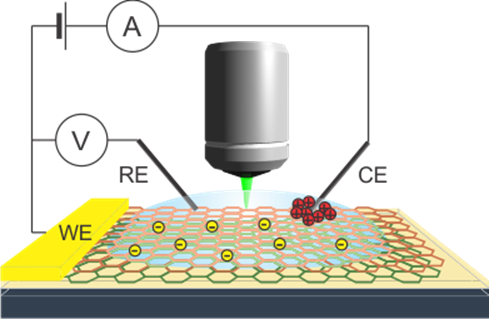
One of the important features of graphene and related low-dimensional objects is the relatively simple tunability of their electronic structure, an asset that extends the usability of these materials even further beyond present experience. A direct injection of charge carriers into the conduction or valence bands, that is, doping, represents a viable way of shifting the Fermi level. In particular, electrochemical doping should be the method of choice, when higher doping levels are desired and when a firm control of experimental conditions is needed. The electrochemical experiments can be coupled in-situ to spectroscopic methods like Raman spectroscopy, photoluminescence or UV/Vis/NIR absorption spectroscopy. The in-situ spectroelectrochemistry is a very powerful combination of methods, potentially delivering direct information on the band filling, disorder and related phenomena as the function of charge.
- Frank O., Dresselhaus M.S., Kalbac M. Raman spectroscopy and In-situ Raman spectroelectrochemistry of isotopically engineered graphene systems. Accounts of Chemical Research 48(1), 111-118 (2015). DOI: 10.1021/ar500384p
- Kalbac, M.; Reina-Cecco, A., Farhat, H., Kong, J., Kavan, L.; Dresselhaus, M. S.: The Influence of Strong Electron and Hole Doping on the Raman Intensity of Chemical Vapor-Deposition Graphene. ACS Nano 4(10), 6055-6063 (2010). DOI: 10.1021/nn1010914